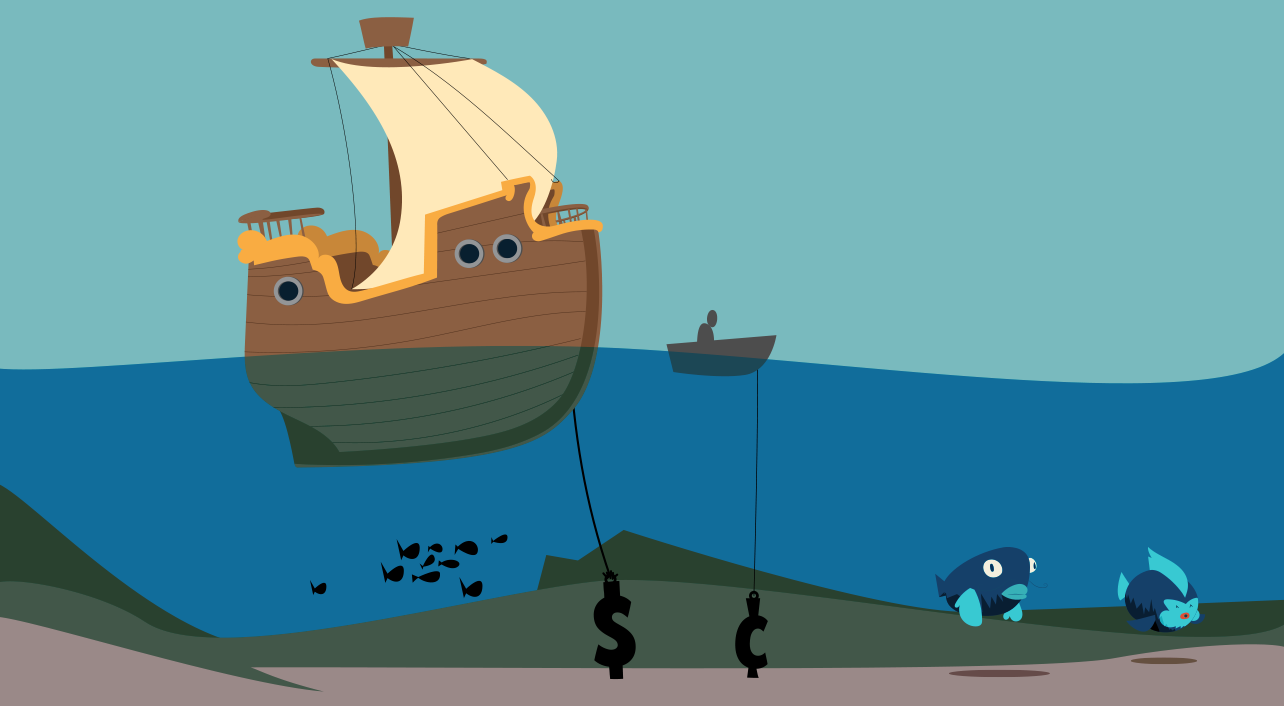- sales
- Blog post
The surprising power of anchoring your price
You know what anchoring is: The first number on the table in a negotiation “anchors” the discussion around that price. If you lead with a high price, the final deal will be larger. If you allow your buyer to lead with a lowball offer, the deal will be smaller.
But have you thought about why anchoring works? You might conclude that it’s about setting expectations – signaling to your buyer that your product is worth a premium.
But what would happen if your anchor defied expectations? If you were hoping to get $30,000, what if you smiled and said the price is a million dollars? The buyer knows you’re joking … but would you still get a better deal?
It turns out you would.
Big and bigger
Let’s take a closer look at that million dollar anchor. In two studies, researchers asked participants to make a salary offer to a hypothetical applicant for an administrative assistant job. The job’s previous salary was $29,000.
One group was told that the applicant, when asked about salary, had jokingly replied: “I would like $100,000, but really I am just looking for something that is fair.” Even though the anchor was well outside the salary range for the job, it resulted in offers averaging $35,654. That was 10% higher than a control group whose average offer was $32,463.
Now, the hundred-thousand-dollar salary was implausible, but not utterly wacky. So next the researchers tried the same experiment, using a million dollars as the anchor. Would people think the applicant was flaky? Would they punish her with a low offer? No. In fact, the million dollar anchor was even more effective. The people in that group got salary offers averaging $39,782, fully 22.5% above the control group average.
It’s not about expectations
It’s clear from this study that anchors don’t work by setting expectations. Nobody expects to pay an administrative assistant a million bucks.
Other experiments have found that even random or impossible numbers can be powerful anchors. Judges who receive requests for long prison sentences from prosecutors give longer sentences – even when told those requests are generated randomly. People who are asked if the Mississippi River is longer or shorter than 30,000 miles, or if Mahatma Gandhi was older or younger than 140 when he died, give higher figures when asked to estimate the actual number.
So what’s really going on?
When people consider a proposal, brain researchers believe two things happen:
- They frame the proposal as a hypothesis to be tested, and then
- They test that hypothesis in light of their relevant knowledge and experience.
And since we can’t consider everything, the brain selects only the knowledge it deems relevant. So the hypothesis you present determines what information the buyer will bring to bear.
For example, if you jokingly quote a price of a million dollars, that “hypothesis” – outrageous as it is — activates the buyer’s experience around high prices. “Of course a million dollars is ridiculous,” the buyer thinks. “Even so, I’ve learned that a high price usually reflects higher quality.”
A well-anchored proposal also works because of what it doesn’t activate. If buyers are testing your high-price hypothesis, they’re not thinking about why a low price might be the way to go.
Outside the pricing realm
But anchoring isn’t limited to prices and numbers. It applies to any sort of proposal or recommendation. Let’s say your buyer has been thinking about starting with a small pilot project. You know a small commitment will yield small results and leave the buyer feeling your solution wasn’t effective.
If the buyer puts the idea of a pilot on the table, that becomes the hypothesis to test. And then the buyer isn’t thinking about the benefits of a full-scale rollout.
If you want the buyer thinking about the outcome you want – a full rollout — that’s the hypothesis you need to present first. It will lead to questions such as “Can I afford a full-scale rollout? Do we have time to launch it? If it doesn’t work, can I shut it down quickly?”
But that’s OK. Those are the questions you want asked. If you can address them successfully, they lead to the outcome you want.
In short, you need to anchor buyers with your preferred outcome – whether it’s the price you want them to pay, the product that will serve them best, or the action you want them to take.
This blog entry is adapted from the Rapid Learning module “Anchoring: The surprising reason why it works – and why it’s not just about numbers.” If you’re a Rapid Learning customer, you can watch the video here. If you’re not, but would like to see this video (or any of our other programs), request a demo and we’ll get you access.
The blog post and Rapid Learning video module are based on the following research study: Thorsteinson T (2011). Initiating salary discussions with an extreme request. Journal of Applied Psychology 42(7):1774-92.

Get a demo of all our training features
Connect with an expert for a one-on-one demonstration of how BTS Total Access can help develop your team.




1 Comment
Thank you for the article. Creating hypothesis is a number one step to get archive your goal but not till you create the objectives, which just as essential to anchor the price.